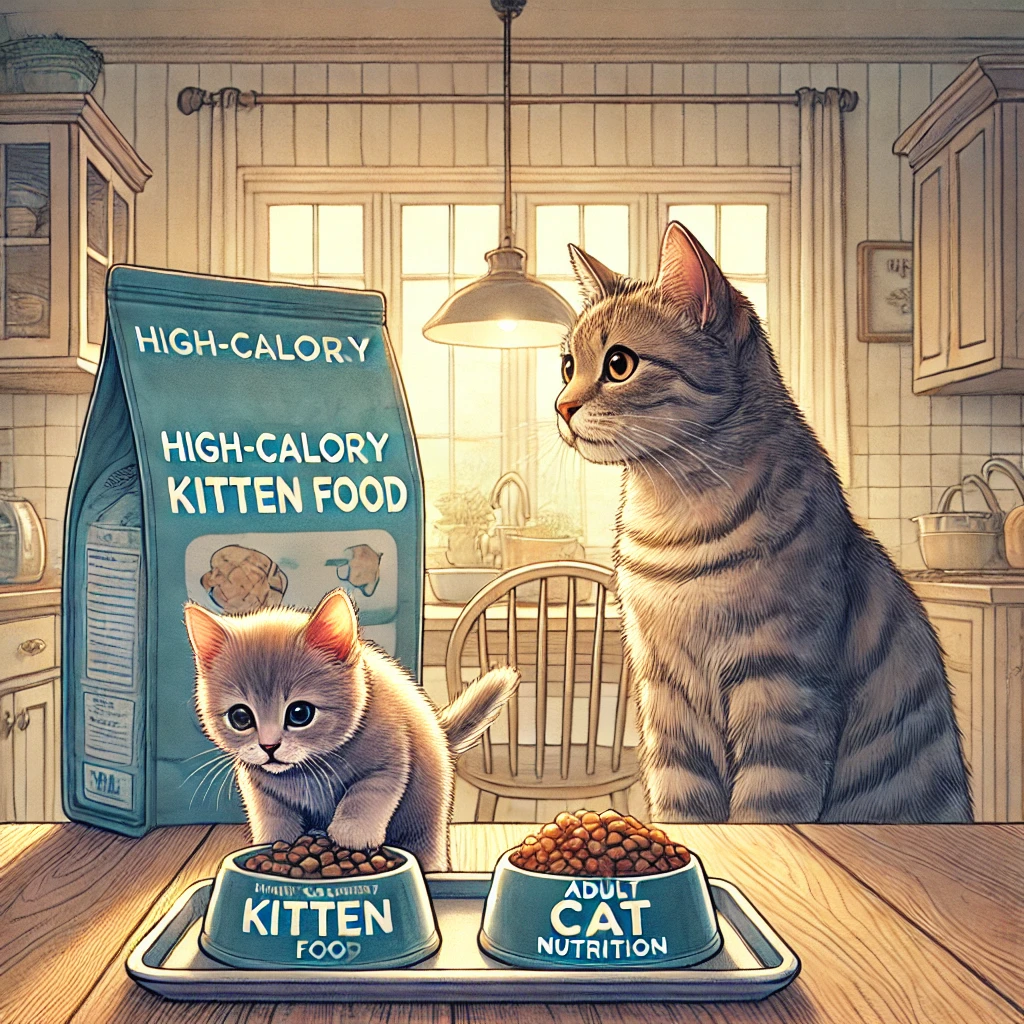The first year of a kitten’s life is filled with rapid growth and boundless energy, and their diet plays a critical role in supporting these developmental stages. High-calorie best cat dry food is specially formulated to meet the unique needs of growing cats, but as they approach adulthood, their dietary requirements begin to change.
If you’re asking how long should a cat eat kitten food, understanding the purpose of high-calorie diets and the best time to transition your cat to adult food is essential for ensuring their health and well-being. This guide will walk you through everything you need to know.
Why Kitten Food Is High-Calorie and Nutrient-Dense
Kitten food is designed to support the intensive growth and energy demands of young cats. It contains:
- Protein: Essential for muscle and tissue development.
- Calories: To fuel their active lifestyle and rapid growth.
- Fatty Acids: For a shiny coat and healthy skin.
- DHA: Supports brain and vision development.
- Calcium and Phosphorus: Promote solid bones and teeth.
These nutrients are crucial during the first 12 months, a period when kittens grow rapidly and develop their immune systems. However, as your kitten matures, their caloric and nutritional needs decrease, making it necessary to switch to adult cat food.
Signs That It’s Time to Transition to Adult Food
Recognizing when your kitten is ready to move away from high-calorie kitten food is key. Here are the primary indicators:
- Age:
- Most cats transition to adult food at 12 months.
- Larger breeds, like Maine Coons, may require kitten food for up to 18 months.
- Stabilized Growth:
- Your kitten’s weight and size plateau as they reach their full adult dimensions.
- Energy Levels Decrease:
- Adult cats tend to be less energetic than kittens, reducing their calorie requirements.
- Complete Set of Adult Teeth:
- Around 6 months, kittens lose their baby teeth, and by adulthood, they develop their permanent set.
- Veterinarian Recommendation:
- Always consult your vet to confirm if your cat is ready for the transition.
How to Transition Your Cat from Kitten Food to Adult Food
Switching from kitten food to adult food should be done gradually to prevent digestive upset. Follow these steps for a smooth transition:
- Start Slowly: Begin by mixing 25% adult food with 75% kitten food.
- Increase Gradually: Over 7–10 days, gradually increase the proportion of adult food while reducing kitten food.
- Monitor Your Cat: Watch for signs of discomfort, such as vomiting, diarrhea, or loss of appetite. If issues arise, slow down the transition process.
- Stick to a Routine: Feed your cat at the same times each day to help them adjust to their new diet.
Patience is crucial during this period. Every cat adapts at their own pace, and rushing the process can lead to unnecessary stress or health issues.
Choosing the Right Adult Food for Your Cat
When transitioning to adult food, quality and nutrition should be your top priorities. The best cat dry food options offer:
- High-Quality Protein: Meat should be the primary ingredient for maintaining muscle health.
- Essential Fatty Acids: Promote healthy skin and a glossy coat.
- Taurine: Vital for heart and eye health.
- No Fillers or Artificial Additives: Avoid products with unnecessary fillers, colors, or preservatives.
Dry food is a convenient choice for many pet parents. It’s easy to store, promotes dental health, and provides balanced nutrition. Combining it with wet food ensures your cat stays hydrated while enjoying varied textures and flavors.
Common Feeding Mistakes to Avoid
- Rushing the Transition:
Abruptly switching your cat’s diet can lead to digestive issues, such as diarrhea or vomiting. - Overfeeding:
While kittens require more calories, overfeeding an adult cat can lead to obesity. Follow portion guidelines on food packaging. - Ignoring Preferences:
Cats can be picky eaters. Experiment with flavors and textures to find the best option for your feline friend. - Neglecting Vet Advice:
Regular check-ups help ensure your cat’s dietary needs are being met at every stage of their life.
FAQs
- How long should a cat eat kitten food?
- Most cats eat kitten food until they’re around 12 months old. Larger breeds may need it for up to 18 months.
- What’s the difference between kitten food and adult food?
- Kitten food is higher in calories and nutrients to support growth, while adult food is formulated for maintenance and weight control.
- How can I tell if my cat is ready for adult food?
- Look for signs like stabilized growth, reduced energy levels, and reaching their first birthday.
- Can I mix wet and dry food during the transition?
- Yes, combining wet and dry food helps maintain hydration while providing balanced nutrition.
- What if my cat refuses the new adult food?
- Gradually introduce the new food by mixing it with their current diet, and consider trying different flavors or brands.
Conclusion: Supporting Your Cat’s Health with Quality Food and Supplies
Transitioning your cat from high-calorie kitten food to adult food is a crucial step in their growth journey. By understanding their nutritional needs, recognizing the right time to switch, and choosing the best cat dry food, you can ensure your furry friend enjoys a healthy and happy adulthood.
At Kwikpets.com, we’re committed to providing premium pet supplies to meet your cat’s needs at every stage of life. Explore our range of high-quality cat food, toys, and accessories today to give your pet the care they deserve!
